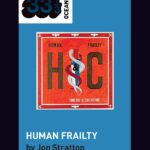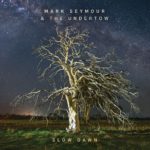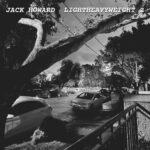Aus Rock Encyclopedia: Hunters and Collectors
Encyclopedia of Australian Rock and Pop entry for Hunters & Collectors.
Author: Ian McFarlane.
Date: 1999.
Original URL: http://www.whammo.com.au/encyclopedia.asp?articleid=931
Formed in 1981.
Style Art-funk to pub rock.
Original line-up: Mark Seymour (guitar, vocals; ex-Jetsonnes), Ray Tosti-Gueira (guitar, vocals; ex-Jetsonnes), Geoff Crosby (keyboards), Greg Perano (percussion; ex-True Wheels), John Archer (bass; ex-Jetsonnes), Doug Falconer (drums; ex-Jetsonnes), Robert Miles (live sound, art director).
Hunters & Collectors albums: Hunters & Collectors (White/Mushroom/Festival, 1982), The Fireman’s Curse (White/Mushroom/Festival, 1983), The Jaws of Life (White/Mushroom/Festival, 1984), The Way to Go Out . . . (White/Mushroom/Festival, 1985), Human Frailty (White/Mushroom/Festival, 1986), What’s a Few Men? (White/Mushroom/Festival, 1987; reissued as Fate in 1991), Ghost Nation (White/Mushroom/Festival, 1990), Collected Works 1982-1990 (White/ Mushroom/Festival, 1990), Skin, Bones & Bolts (box set, White/Mushroom/Festival, 1991), Cut (White/ Mushroom/Festival, 1992), Demon Flower (White/ Mushroom/Festival, 1994), Living in Large Rooms and Lounges (White/Mushroom/Festival, 1995), Juggernaut (White/Mushroom, 1998), Under One Roof (White/Mushroom, 1998); Mark Seymour album: King Without a Clue (Mushroom/Sony, 1997).
History
The journey that has taken Hunters & Collectors from esoteric art-funk innovators to Australia’s greatest pub-rock exponents has been a fascinating one to say the least. The band’s early records were full of challenging, noisy rock, bleak imagery, gripping drama and slithery funk. By the 1986 album Human Frailty and single `Say Goodbye’, the band had stripped away unnecessary excess to arrive at a sound that combined equal parts refried boogie-rock and lyric paradoxes.
Frontman Mark Seymour became the `thinking woman’s sex symbol’ with his blue labourer’s singlet, bulging biceps, introspective angst and impassioned vocals. There was a double irony in the sight of beer-soaked boys in suburban pubs across the land bellowing about not feeling like a woman any more, while the girls danced relentlessly up the back. Hunters & Collectors’ great achievement was to lay bare human emotions in the intensely ritualistic milieu of the pub-rock gig.
The foundation stone of the Hunters & Collectors’ sound can be found in Melbourne band The Jetsonnes which comprised Seymour, John Archer, Doug Falconer, Ray Tosti-Gueira and Margot O’Neill (vocals). The Jetsonnes played the inner-city scene circa 1980. As Clinton Walker put it, the band’s clever post-punk pop sound was lighter, bouncier (rather than funkier) and more infectious than other like-minded bands such as Models and International Exiles. The only recorded evidence of the band’s brief existence was the track `News-paper’ which was combined with International Exiles’ `Miniskirts In Moscow’ as one side of a gig giveaway 7-inch single. Not long after that, Seymour and the others abandoned The Jetsonnes for a far more radical and unremitting concept.
Seymour introduced new members Geoff Crosby and Greg Perano, whose inspired contribution was to utilise an empty gas tank as percussion, which gave the sound its clattering, metallic edge. Perano also derived the band’s name from the track `Hunters and Collectors’, on the German band Can’s 1975 album Landed, which was a good indication of the influences and intentions at work. The extended line-up also included a massed horn section (eventually known as The Horns of Contempt) that comprised John Howard (trumpet), Andy Lynn (trumpet), Chris Malherbe (trumpet), Nigel Crocker (trombone), Michael Waters (trombone) and Jeremy Smith (French horn). Also integral to the band’s approach was live sound mixer Robert Miles, hence the credit as a band member.
Right from the outset, Hunters & Collectors were hailed as the hip `Next Big Thing’ and the band to experience live. Mushroom Record’s subsidiary label White signed the band and issued the 12-inch EP `World of Stone’/`Watcher’, `Loin-clothing’ (January 1982) and the combined mini- album/12-inch EP Hunters & Collectors (July 1982). Hunters & Collectors took the band into the national Top 20 for the first time when it peaked at #14 during September. The mini-album contained one of the band’s early classics in the seven-minute `Talking to a Stranger’. Combined with Richard Lowenstein’s radical film clip, `Talking to a Stranger’ was an expression of alienation and sheer anguish. It was also issued on 7-inch as an edited single version backed with the full-length rendition (July 1982).
By that stage, Martin Lubran had replaced Tosti-Gueira on guitar, and The Horns of Contempt was down to a trio of Howard, Waters and Smith. The band saw out 1982 with the release of the Mike Howlett-produced Payload 12-inch EP (December). Hunters & Collectors spent six futile months in the UK during 1983, then travelled to West Germany to record The Fireman’s Curse with renowned producer Conny Plank (Can, Cluster, Kraftwerk). The Fireman’s Curse (September 1983) was overly ambitious and cluttered, and generally suffered from a lack of fresh ideas. `Judas Sheep’/`Eggheart’ (on 12-inch only, August) and `Sway’/`Mr Right’ (November) were issued as singles. At that point, the band nearly broke up, although only Perano and Lubran left.
Following a period of re-evaluation, the brilliant The Jaws of Life album (also recorded with Plank; issued July 1984) featured a stripped-down rock sound, a driving rhythm, more concise arrangements and stronger songs. `Betty’s Worry or the Slab’/ `Carry Me’ was an inspired choice as a single (August 1984). As Toby Creswell wrote in Rolling Stone, the album’s aesthetic push ranged from the barrenness and isolation of outback Australia to the beer-swilling machismo of the suburbs. The poig-nant (non-album) `Throw Your Arms Around Me’/ `Unbeliever’ was another classic single (November 1984). The live album The Way to Go Out . . . (May 1985) captured all the ferocious power and muscular energy that characterised the band’s pub gigs. Crosby left after that, and Waters took over keyboards.
The Gavin McKillop-produced album Human Frailty (May 1986) was a further refinement of the sinewy and dynamic approach established on The Jaws of Life. The album saw the band become what Ed St John in Rolling Stone called `a truly accessible, street-credible rock & roll band’. Human Frailty reached #10 on the national chart in June. It yielded the singles `Say Goodbye’/`Follow Me’ (#20 in April 1986), `Throw Your Arms Around Me’ (new version)/`When the Truth Comes Out’, `Who’s on Left’ (#32 in June), `Everything’s on Fire’/`This Morning’ (August) and `Is There Anybody in There?’/`Dog’ (October).
Following the release of Human Frailty, the band toured the USA twice and issued the three-track, 12-inch EP `The Living Daylights’ (April 1987). This was something of a stop-gap measure before the band returned with the Greg Edward-produced What’s a Few Men? album in November. Seymour derived the album’s title from Albert Facey’s memoir, An Unfortunate Life. `Do You See What I See?’/`Give Me a Reason’ (#25 in November 1987), `Still Hanging Around’/`John Riley’ (February 1988) and `Back on the Breadline’/`Real World’ (June) were issued as singles.
The newly recorded `Back on the Breadline’ actually came from the US release (on IRS) of the What’s a Few Men? album which had been renamed Fate. As well as `Back on the Breadline’, Fate featured several other new tunes in place of tracks from the Australian release. The White label did not issue Fate locally until April 1991. Accom-plished blues guitarist Barry Palmer (concurrently in Harem Scarem) joined in early 1988, allowing Seymour greater freedom as frontman. Ghost Nation (March 1990) was perhaps the band’s finest album to date. It produced the singles `When the River Runs Dry’/`Price of Freedom’ (#23 in December), `Turn a Blind Eye’/`Two Roads’ (#42 in March 1990), `The Way You Live’/`Do You See What I See?’ (acoustic) (May) and `Love All Over Again’ (August). The band also contributed the track `Breakneck Road’ to the Various Artists album Building Bridges on CBS (1989).
Ghost Nation peaked at #5 on the national chart, and broke the 70 000 unit platinum award threshold (eventually selling 130 000 copies) for the first time in the band’s career. To coincide with this new-found success, the band signed a new worldwide deal with Atlantic Records, scored the coveted support slot on Midnight Oil’s 1990 international tour and was named Australian Band of the Year in Rolling Stone. 1990 ended with the release of `Throw Your Arms Around Me’ (another new version) for a third time as a single (#34 in February 1991) and the compilation album/video Collected Works 1982-1990.
American producer Don Gehman (R.E.M., John Mellencamp) incorporated electronic percussion and drum loops into the sound on the band’s seventh studio album Cut (#6 on the national album charts in August). It featured the singles `Where Do You Go?’ (#33 in October 1991), `Head Above Water’ (July 1992), `We the People’ (September) and `True Tears of Joy’ (#14 in February 1993). The CD EP `Holy Grail’ became another hit for the band (#20 in July 1993). The Nick Mainsbridge-produced album Demon Flower featured a stronger emphasis on guitars. It reached #2 nationally and spawned the singles `Easy’/`Panic in the Shade’ (March 1994), `Back in the Hole’ (August) and `Drop in the Ocean’ (November). Hunters & Collectors also contributed a cover of The Saints’ `Know Your Product’ to the Various Artists compilation Earth Music issued on Mushroom during June 1994.
The band toured Europe, after which Palmer formed deadstar. He did, however, remain a member of Hunters & Collectors. The band continued its release schedule with the CD EP Live Demons (March 1995) and its second live epic, the 25-track double album Living in Large Rooms and Lounges (December 1995). At the end of 1996, Seymour undertook a solo tour and recorded the Barry Palmer-produced debut solo album King Without a Clue. Seymour’s debut CD single, `Last Ditch Cabaret’, appeared in April 1997, to be followed by the album and second single, `The Ghost of Vainglory’, in October. By that time Hunters & Collectors had recorded a final studio album, Juggernaut (slated for release in early 1998), and announced their imminent split.
The release of the final Hunters & Collectors’ studio album, Juggernaut, in February 1998 coincided with the Juggernaut (Say Goodbye) farewell tour. The band undertook its final ever show on 22 March (in hometown Melbourne). The album spent a brief two weeks in the national Top 40, after a debut placement of #38. The band’s final CD single was ‘Suit Your Style’ (May). Mushroom also reissued ‘Talking to a Stranger’ as a CD single, as part of the 1998 25th anniversary celebrations. The CD contained the original single version of the song, Richard Lowenstein’s classic video clip, a live version and five remixes.
With his commitments to Hunters & Collectors over, lead singer Mark Seymour began touring as a solo artist in June. His next solo single, ‘Home Again’ (July), was the third to be lifted from the King Without a Clue album. He followed that with a new CD single, ‘You Don’t Have to Cry Anymore’, in October. A month later, Mushroom issued the final Hunters & Collectors album, the 17-track live set Under One Roof. The material had been culled from a strident concert taped at Selina’s in Sydney during the farewell tour. The release coincided with Mark Seymour’s appearance at the Telstra Concert of the Century/Mushroom 25th anniversary.
N/A.





